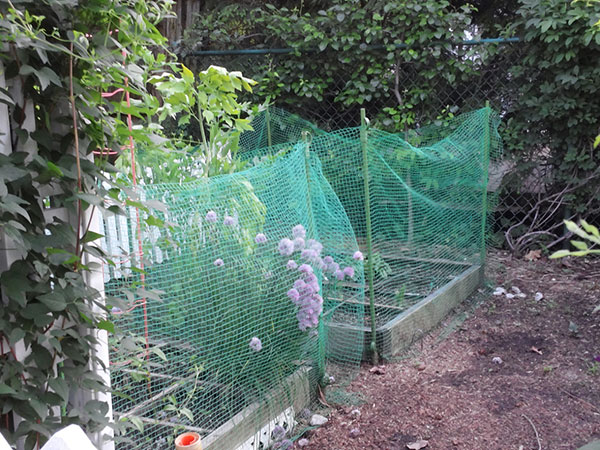To put netting over tomato plants, drape the netting over stakes or cages surrounding the plants and secure it tightly using clips or ties. Then, ensure the netting is elevated above the plants to prevent damage and provide support as the tomatoes grow.
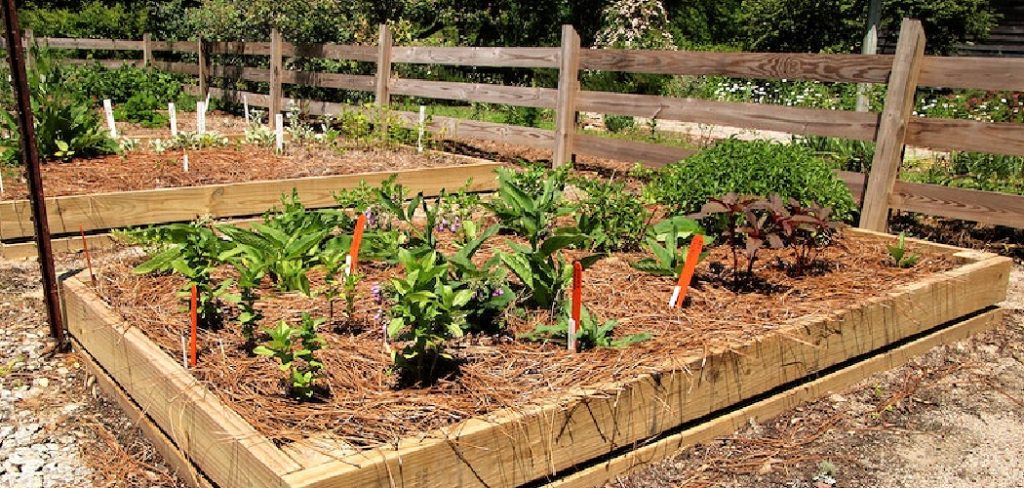
Netting protects the plants from birds and insects, promoting healthy growth and preventing damage to the fruit. Tomato plants are a popular choice in many home gardens, thanks to their delicious flavor and versatility in various recipes. However, these plants are often plagued by pests such as birds and insects that are eager to feast on the fruit.
To shield your tomato plants from such intruders, netting can be used as a protective barrier. By carefully following a few simple steps, you can effectively put netting over your tomato plants, safeguarding them against unwelcome visitors and encouraging their healthy growth. We will provide you with a comprehensive guide on how to put netting over tomato plants, allowing you to enjoy a bountiful harvest while keeping pests at bay.
Credit: www.pinterest.com
Why Use Netting For Tomato Plants
Netting provides several benefits when it comes to tomato plants. First and foremost, it offers protection against pests and birds. These unwanted visitors can cause significant damage to the plants and their fruits. By covering the plants with netting, you can effectively keep them out, ensuring that your tomatoes remain safe and unharmed.
Netting also minimizes damage from adverse weather conditions. Strong winds, heavy rain, and hail can all wreak havoc on tomato plants, leading to breakage and loss of fruit. However, by providing a barrier between the plants and the weather, netting helps to shield them from such damage.
In addition to protection, netting also provides support for the plants to grow. Tomatoes are known for their sprawling nature, and without proper support, the branches can bend or break under the weight of the fruit. Netting helps to keep the plants upright and promotes optimal growth.
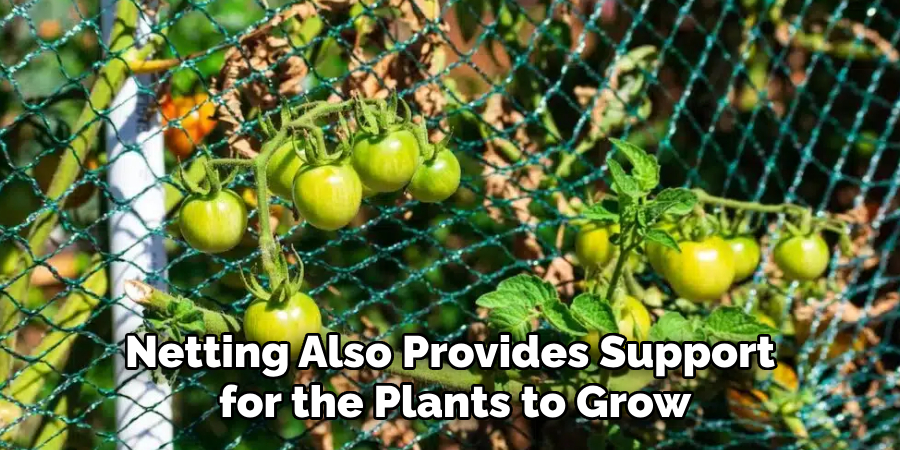
How to Put Netting Over Tomato Plants : Step by Step Guide
Choosing The Right Netting For Your Tomato Plants
Choosing the right netting for your tomato plants is crucial for effectively protecting them from pests. One important consideration is the mesh size of the netting, as different pests require different sized openings to be effectively deterred. For instance, small insects like aphids and thrips may require a finer mesh size, while larger pests such as birds and squirrels may be deterred by a larger mesh size.
Another factor to consider is the type of netting material. Nylon netting is known for its strength and durability, making it a good choice for long-term use. On the other hand, polyethylene netting is lightweight and easy to handle, making it a convenient option for temporary applications.
When determining the height and width requirements of the netting, it is essential to consider the growth habit of tomato plants. Account for their potential height and spread, and ensure that the netting is tall enough and wide enough to cover the entire plant and accommodate its growth throughout the season.
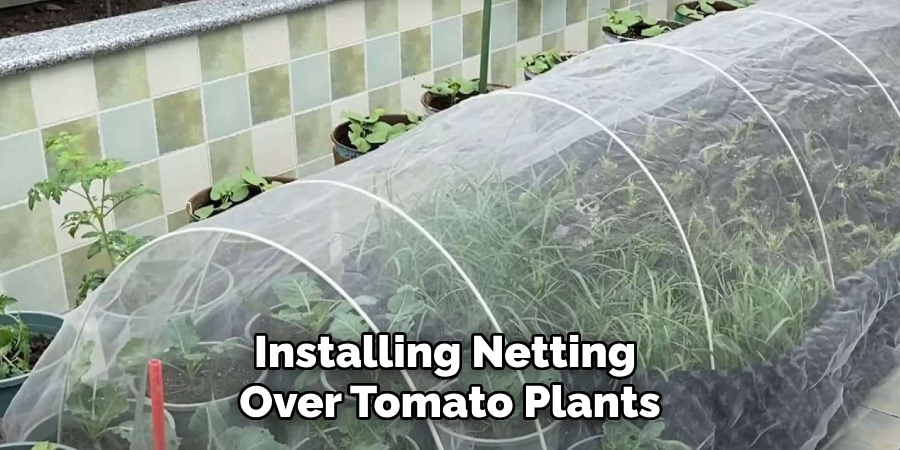
How To Install Netting Over Tomato Plants
Installing netting over tomato plants is a simple process that helps protect them from pests and birds. Start by determining the size of the area to be covered, then attach the netting securely to stakes or a frame. Make sure the netting is taut and secure, allowing your tomato plants to grow and thrive.
Preparing The Tomato Plants For Netting
To successfully install netting over tomato plants, it is important to properly prepare the plants before proceeding with the installation. Start by inspecting the plants for any signs of disease or pest infestation. Remove any unhealthy or damaged leaves or stems to promote better airflow and reduce the risk of spreading infections. It is also essential to prune the tomato plants, removing any unnecessary growth or lateral shoots to ensure a more compact and manageable structure.
Creating a sturdy support structure is crucial in the netting installation process. Use stakes or trellises to provide vertical support for the tomato plants, preventing them from collapsing under the weight of the netting or heavy fruit. Consider using strong materials, such as bamboo or metal, and securely anchor them into the ground to ensure stability.
Once the support structure is in place, secure the netting effectively to protect the tomato plants. Use clips, ties, or string to attach the netting to the support structure while ensuring it is taut and properly stretched. This will prevent birds and other pests from accessing the plants and damaging the fruit. Remember to leave enough space between the netting and the top of the plants to allow for growth without causing damage.
Maintaining The Netting And Tomato Plants
Regular inspection for any damages is crucial to ensure the effectiveness of the netting over your tomato plants. Carefully examine the netting for tears, holes, or loose threads that may compromise its ability to protect your plants from pests and external elements. If you spot any damages, promptly repair them using mending tape or by sewing the torn sections together using a strong thread.
Cleaning the netting is also essential as it helps prevent clogging. Over time, debris, dust, and pollen can accumulate on the netting, limiting its ability to allow sunlight and airflow. To clean the netting, gently remove any visible dirt or debris using a soft brush or a vacuum cleaner with a brush attachment. For more stubborn stains, you can use a mild detergent and gently scrub the affected areas.
Properly storing the netting during the off-season ensures its longevity. Before storing, make sure the netting is completely dry to avoid mold or mildew growth. Roll or fold the netting neatly and place it in a dry and ventilated area. Consider using a storage bag or container to protect it from dust and pests. By following these maintenance practices, you can maximize the lifespan of your netting and promote healthy tomato plant growth.
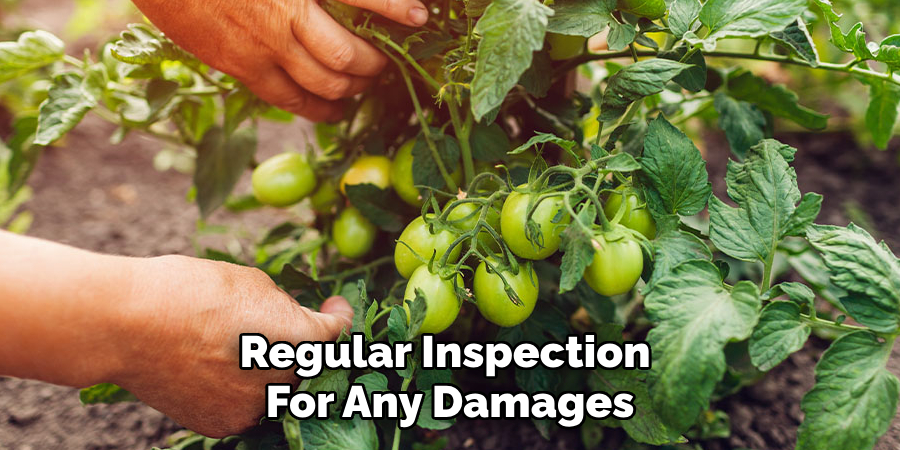
Common Issues With Netting And Effective Solutions
One of the common issues when putting netting over tomato plants is the netting getting tangled or sagging. This can be frustrating as it reduces the effectiveness of the netting in protecting the plants from pests such as birds. To prevent netting from getting tangled or sagging, it is important to properly secure the netting to a structure such as stakes or a trellis. Additionally, regularly checking and adjusting the netting will help ensure it remains taut and in place.
Another issue that can arise with netting is birds reaching through the netting to access the tomatoes. To prevent this, it is recommended to use smaller mesh sizes that birds cannot fit through. Alternatively, using additional layers of netting or mesh can also provide added protection against birds.
Lastly, excess weight from the fruits can cause the netting to sag. To address this, it is advisable to regularly prune and support the tomato plants to help distribute the weight more evenly. This can be done by using stakes or cages to support the plants and prevent the netting from becoming overwhelmed by the weight of the fruits.
Tips And Tricks For Successful Netting
One way to successfully put netting over tomato plants is to use additional stakes for extra support. These stakes can be inserted into the ground around the plants to create a sturdy structure that will hold the netting in place. Another tip is to create a double-layer netting system. This involves installing two layers of netting with a small space between them, which can provide extra protection against birds and other pests.
Additionally, it is important to install the netting in a way that allows easy access to the plants. This can be done by leaving one side or a portion of the netting unattached, making it simple to lift and reach the tomatoes for watering, pruning, and harvesting. By following these tips and tricks, you can effectively protect your tomato plants with netting.
Frequently Asked Questions On How To Put Netting Over Tomato Plants
Should I Put Netting Over My Tomato Plants?
Yes, it’s recommended to put netting over tomato plants. Netting can protect the plants from birds and insects, preventing damage to the fruit. It also provides support for the plants to grow upwards, promoting healthy growth and reducing the risk of branches breaking.
How Do I Protect My Tomatoes From Birds And Squirrels?
To protect your tomatoes from birds and squirrels, cover them with a bird netting or use scare devices like reflective tape or fake predators. Place shiny objects nearby and keep the garden area clean to discourage squirrels. Regularly check and maintain these deterrents to ensure effectiveness.
How Do You Put Netting Over Tomato Plants?
To put netting over tomato plants, first, determine the height and width needed to fully cover the plants. Use stakes or a trellis to create a frame to support the netting. Then, carefully drape the netting over the frame, ensuring it covers all sides.
Secure the netting tightly to prevent birds and pests from accessing the plants.
Why Is Netting Important For Tomato Plants?
Netting is important for tomato plants as it provides protection against birds, insects, and other pests that can damage or eat the fruits. It also helps to prevent disease transmission from pests to the plants. Netting promotes healthy growth and higher crop yield by minimizing plant stress and damage.
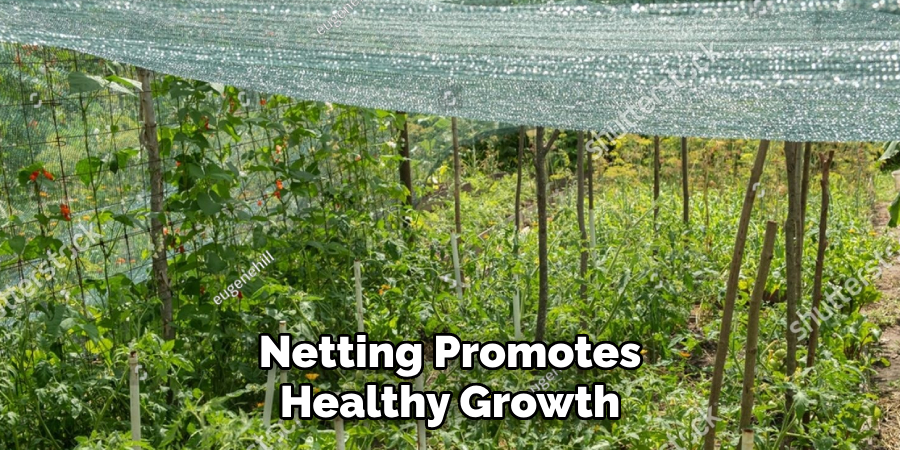
Conclusion
Netting over tomato plants is a simple yet effective method of protecting them from pests and harsh weather conditions. By following these steps, you can ensure the health and productivity of your tomato plants throughout the growing season. From choosing the right netting material to properly installing it, this guide has provided you with all the necessary information.
By implementing these techniques, you can enjoy a bountiful harvest of delicious tomatoes in your garden. Happy gardening!

